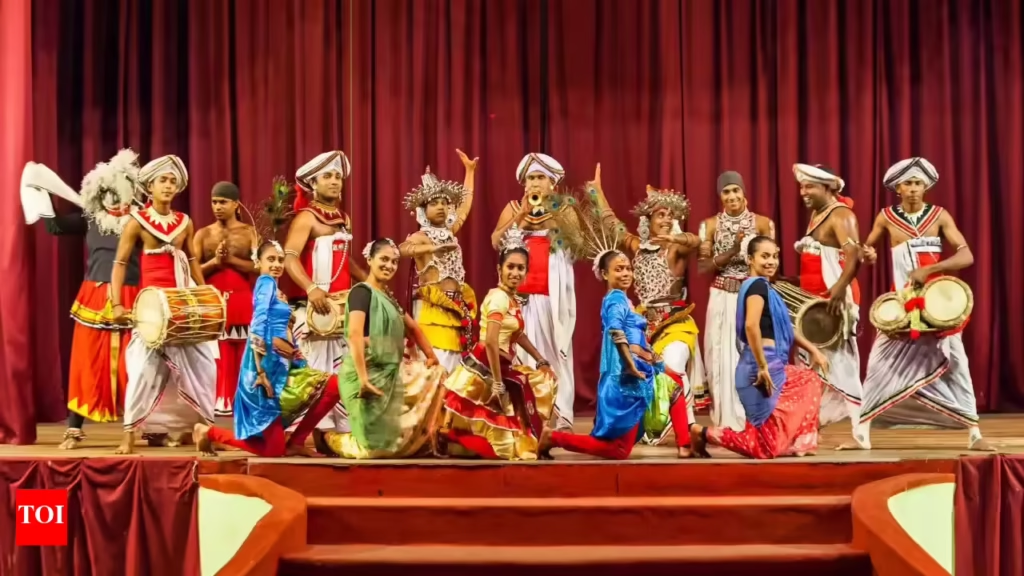Traditional Dress in India: A Lifestyle Rooted in Culture and Heritage
India is often described as a land of unity in diversity, and nowhere is this more visible than in its traditional dress. Clothing in India is not just a way to cover the body—it is a traditional, a cultural identity, and a connection to centuries of tradition. Each region, community, and festival has its own attire, reflecting values, climate, craftsmanship, and social life.
In modern times, even though western wear is common, traditional dress remains deeply embedded in the lifestyle of Indians. From everyday wear in rural areas to grand celebrations in cities, traditional attire continues to define the nation’s cultural fabric.
This blog explores how traditional dress in India is not only about fashion but also traditional that binds generations, reflects regional identity, and continues to evolve with modern influences.

Traditional Dress as a Way of Life
For centuries, clothing in India has been tied to lifestyle habits, climate, and customs. In rural India, men still wear dhotis, lungis, or kurtas for daily comfort, while women prefer sarees or salwar kameez that allow ease of movement during household work.
During festivals, weddings, and rituals, the attire changes—people wear elaborate versions of traditional garments, often woven with silk, zari, or embroidery. This ritualistic approach shows how dress is integrated into lifestyle, marking occasions of joy, spirituality, and family bonding.
1. Sari – The Everyday Elegance
The sari is not only the most iconic Indian dress but also a lifestyle choice for millions of women. In villages, cotton sarees are worn daily for comfort in the heat, while in cities, women choose silk or chiffon sarees for office or celebrations.
- Lifestyle Connection: The sari represents grace, versatility, and respectability. Its draping style often reflects regional identity, like the Nauvari in Maharashtra or the Mekhela-inspired drape in Assam.
2. Salwar Kameez – Comfort Meets Tradition
The salwar kameez is particularly popular in Punjab and northern states. Its comfort makes it a daily wear option for women of all ages. The dupatta is not just an accessory but also a cultural symbol of modesty.
- Lifestyle Connection: In urban India, it is often chosen for office wear, blending style with practicality.
3. Lehenga Choli – The Festive Lifestyle
The lehenga choli is rarely everyday attire; it is part of celebratory lifestyle, especially for weddings, festivals, and dance events like Garba in Gujarat. Heavy embroidery, mirror work, and zari make it a favorite for grand occasions.
- Lifestyle Connection: Represents festivity, joy, and cultural heritage during life’s milestones.
4. Mekhela Chador and Regional Sarees
In Assam, the mekhela chador is a lifestyle garment, worn daily and also during cultural events like Bihu. Similarly, Kerala women wear the Kasavu saree during Onam, reflecting how dress integrates into seasonal and festival lifestyles.
Traditional Dresses for Men and Their Lifestyle Connection
1. Dhoti and Kurta – Simplicity of Tradition
The dhoti, often paired with a kurta, is worn daily in rural India and during rituals in urban areas. It signifies humility, simplicity, and respect.
- Lifestyle Connection: Farmers wear dhotis for comfort while working, while priests wear them during rituals, highlighting its role in both livelihood and spirituality.
2. Kurta Pajama – Versatility in style
The kurta pajama is a common choice for men, worn casually at home, at work in rural areas, and during religious ceremonies. With a Nehru jacket, it also becomes semi-formal attire.
- Lifestyle Connection: Suitable for both simple living and stylish events, it adapts to all aspects of Indian men’s lives.
3. Sherwani – style of Celebration
Sherwanis are not daily wear but symbolize a traditional of royalty and celebration. Worn mostly during weddings, they represent grandeur, elegance, and cultural pride.
4. Lungi and Mundu – Comfort style in the South
In Kerala and Tamil Nadu, lungis and mundus are worn as daily attire because of the hot and humid climate. They represent a style of ease and adaptability to weather.
Regional Lifestyle and Traditional Dress
India’s lifestyle is deeply regional, and clothing reflects local climate, culture, and customs.
- North India:
- Kashmiris wear pherans to keep warm in the freezing winters.
- Punjabi men wear turbans as a sign of identity and respect.
- Uttar Pradesh and Bihar highlight dhotis and sarees in daily life.
- West India:
- Rajasthan’s style is vibrant, reflected in ghagra cholis with mirror work and turbans for men.
- Maharashtra’s Nauvari saree is draped in a way that allows women to work comfortably.
- South India:
- Tamil Nadu’s Kanjeevaram sarees are integral to weddings.
- Kerala’s Kasavu saree and mundu are part of Onam style celebrations.
- East India:
- Assam’s mekhela chador reflects a cultural lifestyle rooted in silk weaving.
- Bengal’s white saree with red border is iconic during Durga Puja, connecting attire with religious lifestyle.
Traditional Dress in Festivals and Rituals
Festivals in India are inseparable from traditional dress. Lifestyle during Diwali, Holi, Durga Puja, Eid, or Bihu involves wearing new or special attire. Bridal wear is one of the most important lifestyle traditions, where sarees, lehengas, and sherwanis mark life’s most significant celebration—marriage.
These rituals show how traditional clothing is not just worn but celebrated as part of India’s style.
Influence of Modern Lifestyle on Traditional Dress
Today, urban styles have blended traditional and western wear. For instance:
- Sarees are paired with modern blouses or even crop tops.
- Kurta with jeans has become everyday fusion wear for men and women.
- Lightweight fabrics and machine embroidery are replacing heavy handwoven garments for convenience.
Bollywood and social media also play a role in making traditional attire fashionable in modern styles. Designers now create Indo-Western styles that keep heritage alive while fitting into global trends.
Sustainable Lifestyle Through Traditional Dress
Another dimension of lifestyle is sustainability. Traditional Indian fabrics like khadi, cotton, and handwoven silk are eco-friendly compared to fast fashion. Wearing handloom sarees or handmade kurtas supports artisans and promotes a lifestyle of conscious consumption.
Government campaigns like Make in India and Khadi Movement encourage people to integrate sustainable clothing into their daily lives, proving that tradition and lifestyle can also mean responsibility toward the environment.
Conclusion
Traditional dress in India is not just about beauty—it is a way of life. It defines how people celebrate, worship, and express themselves. From the simplicity of a cotton sari to the grandeur of a sherwani, from the everyday lungi in the South to the vibrant ghagra choli in Rajasthan, every garment carries meaning.
In an age of globalization, traditional dress continues to shape Indian style by preserving culture, providing comfort, and promoting sustainable living. It connects generations, reflects identity, and keeps India’s cultural heritage alive.
Thus, traditional attire is more than fashion—it is lifestyle woven into fabric, symbolizing the timeless spirit of India.
